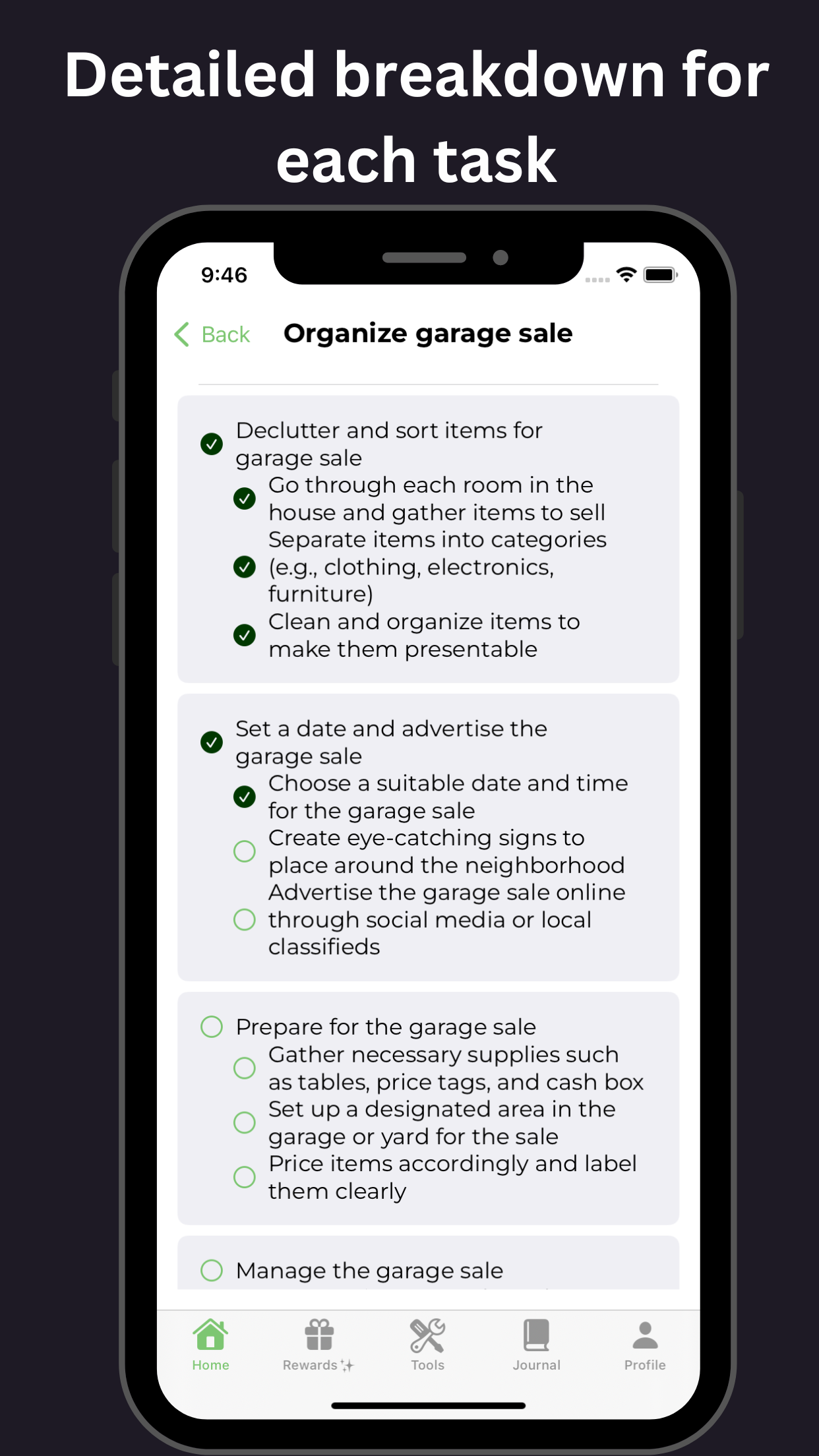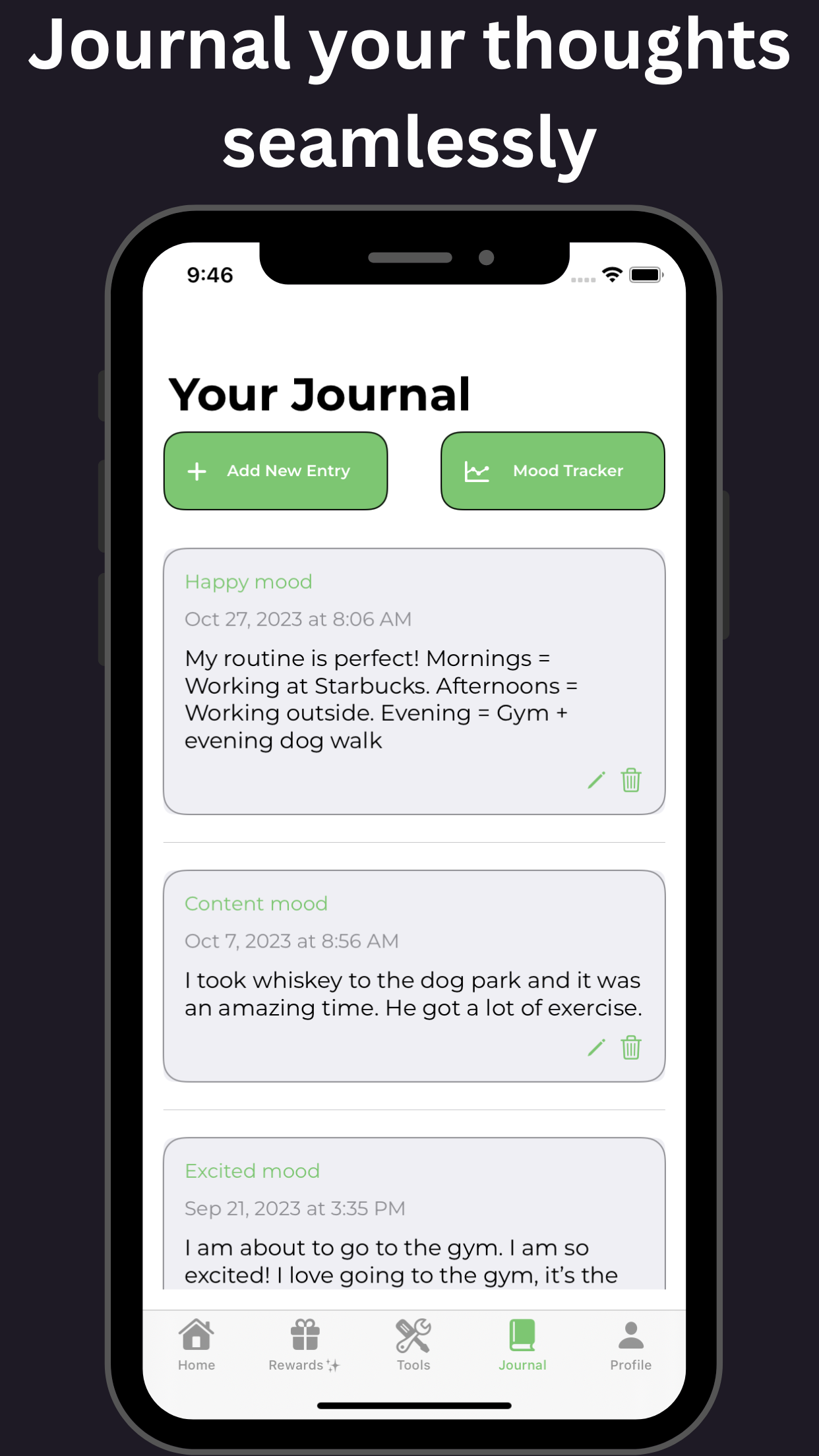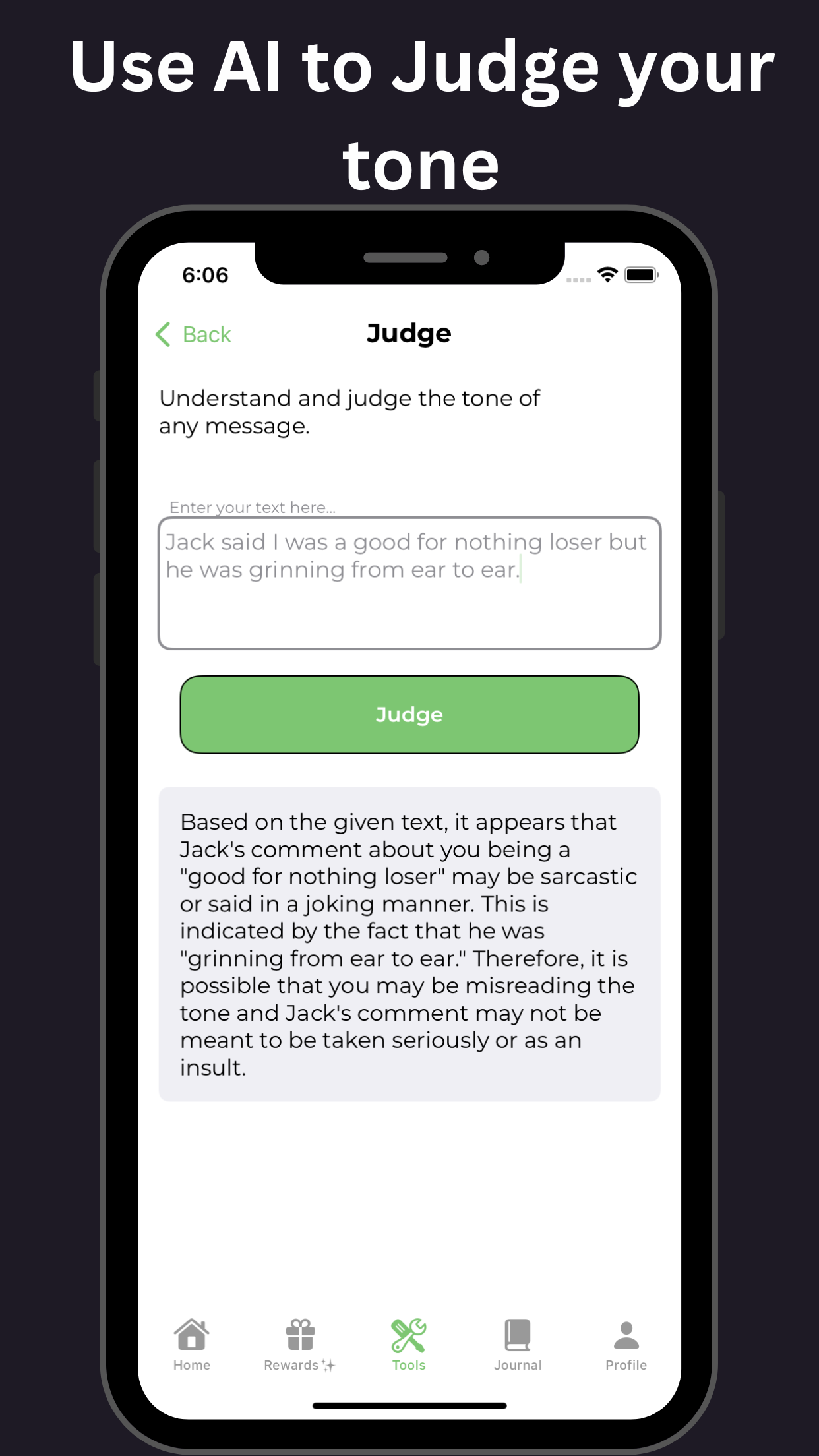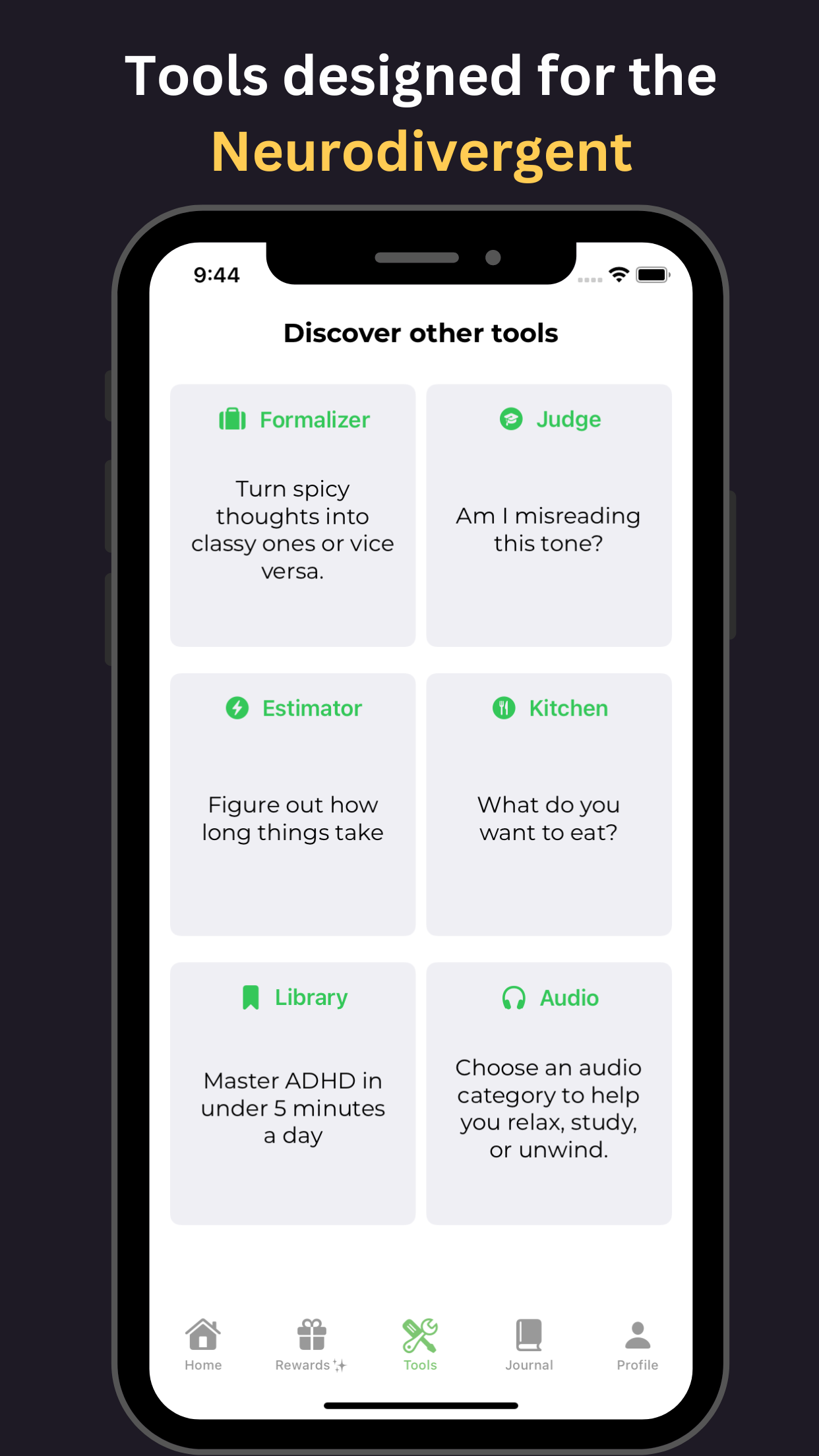Why Managing Hypersensitivity in ADHD is Key to Reducing Sensory Overload and Unlocking Quality of Daily Life
Key Takeaways
| Key Takeaway | Description |
|---|---|
| Definition of Hypersensitivity in ADHD | Hypersensitivity, also known as sensory sensitivity, is a common phenomenon in individuals with ADHD characterized by an intense emotional or physical reaction to certain stimuli. |
| Overlapping Symptoms with Autism | Individuals with ADHD may exhibit overlapping symptoms with autism spectrum disorder, including hypersensitivity to sensory stimuli. |
| Types of Hypersensitivity in ADHD | There are several types of hypersensitivity experienced by individuals with ADHD, including auditory, visual, tactile, vestibular, and gustatory hypersensitivity. |
| Causes of Hypersensitivity in ADHD | Hypersensitivity in ADHD can be caused by a combination of genetic and environmental factors, including differences in brain structure and function. |
| Impact on Daily Life | Hypersensitivity can significantly impact an individual's daily life, causing feelings of anxiety, stress, and overwhelm in response to everyday stimuli. |
| Strategies for Managing Hypersensitivity | Strategies for managing hypersensitivity in ADHD include developing coping mechanisms, creating a sensory-friendly environment, and using relaxation techniques. |
| Role of Executive Function | Executive function deficits in ADHD can contribute to difficulties with regulating emotions and managing hypersensitivity. |
| Co-occurring Mental Health Conditions | Hypersensitivity in ADHD can co-occur with other mental health conditions, including anxiety, depression, and mood disorders. |
| Importance of Early Diagnosis and Intervention | Early diagnosis and intervention are crucial for managing hypersensitivity and improving overall quality of life for individuals with ADHD. |
| Connection to Emotional Regulation | Hypersensitivity in ADHD is closely linked to emotional regulation, with individuals often experiencing intense emotions in response to stimuli. |
| Advantages of Mindfulness and Self-Awareness | Practicing mindfulness and developing self-awareness can help individuals with ADHD better understand and manage their hypersensitivity and emotions. |
Understanding Hypersensitivity in ADHD: Defining the Trait and Its Connection to ADHD
Understanding Hypersensitivity in ADHD: Defining the Trait and Its Connection to ADHD
Individuals with Attention Deficit Hyperactivity Disorder (ADHD) often experience hypersensitivity, a complex trait that affects their emotional, sensory, and social interactions. Hypersensitivity in ADHD is characterized by intense emotional reactivity, increased sensitivity to stimuli, and a heightened sense of awareness. This trait can manifest in various ways, including emotional hypersensitivity, sensory hypersensitivity, and social hypersensitivity.
Defining Hypersensitivity in ADHD
Hypersensitivity in ADHD is not just being overly sensitive, but rather a unique aspect of the disorder that influences how individuals perceive and respond to their environment. It is estimated that up to 70% of individuals with ADHD experience hypersensitivity, which can impact their daily lives, relationships, and overall well-being.
Emotional Hypersensitivity in ADHD
Emotional hypersensitivity in ADHD is marked by intense emotional reactions, mood swings, and a heightened sense of emotional awareness. Individuals with ADHD may be more prone to anxiety, depression, and stress due to their increased emotional sensitivity.
Sensory Hypersensitivity in ADHD
Sensory hypersensitivity in ADHD refers to an increased sensitivity to sensory stimuli, such as light, sound, touch, taste, and smell. This can lead to sensory overload, anxiety, and avoidance behaviors.
Social Hypersensitivity in ADHD
Social hypersensitivity in ADHD is characterized by an increased sensitivity to social cues, relationships, and interactions. Individuals with ADHD may struggle with social anxiety, peer relationships, and emotional regulation in social situations.
The Connection between Hypersensitivity and ADHD
Research suggests that hypersensitivity in ADHD is related to differences in brain structure and function, particularly in the amygdala and prefrontal cortex. These differences can affect emotional regulation, sensory processing, and social interactions.
Coping with Hypersensitivity in ADHD
While hypersensitivity in ADHD can present challenges, there are strategies to help manage and cope with this trait. These include:
- Mindfulness and self-regulation techniques
- Sensory integration therapy
- Social skills training
- Emotional regulation strategies
- Lifestyle changes, such as exercise and stress management
By understanding hypersensitivity in ADHD, individuals can better navigate their emotional, sensory, and social experiences and develop effective coping strategies to improve their overall well-being. With tools like GoblinX, users can access personalized support for anxiety and ADHD, enhancing their coping mechanisms even further.

The Science Behind Hypersensitivity in ADHD: How the Brain Processes Sensory Information
The Science Behind Hypersensitivity in ADHD: Understanding the Complex Relationship
Individuals with Attention Deficit Hyperactivity Disorder (ADHD) often experience hypersensitivity, a common symptom that affects their daily lives. Hypersensitivity in ADHD refers to an intense emotional and sensory response to various stimuli, including sights, sounds, smells, tastes, and textures. Research reveals that this phenomenon is deeply rooted in the brain’s unique processing of sensory information.
The Brain’s Sensory Processing System
In individuals with ADHD, the brain’s sensory processing system is wired differently, leading to an overactive response to sensory inputs. The prefrontal cortex, responsible for regulating emotions, attention, and impulse control, is often underactive, while the amygdala, the emotional processing center, is hyperactive. This imbalance can result in an exaggerated response to stimuli, causing feelings of overwhelm, anxiety, and emotional dysregulation.
The Role of Neurotransmitters
Neurotransmitters, such as dopamine and serotonin, play a crucial role in regulating the brain’s sensory processing system. In ADHD, the levels of these neurotransmitters are often imbalanced, leading to an increased sensitivity to sensory inputs. For example, individuals with ADHD may be more prone to sensory overload due to an excessive release of dopamine in response to novel or intense stimuli.
Key Factors Contributing to Hypersensitivity in ADHD
Several factors contribute to hypersensitivity in ADHD, including:
- Sensory gating: The brain’s ability to filter out irrelevant sensory information is impaired, leading to an increased sensitivity to stimuli.
- Emotional dysregulation: Difficulty regulating emotions can exacerbate hypersensitivity, making it challenging to cope with overwhelming sensory experiences.
- Executive function deficits: Impaired executive function skills, such as planning and organization, can worsen hypersensitivity by making it harder to manage sensory inputs.
Strategies for Managing Hypersensitivity in ADHD
While hypersensitivity in ADHD can be challenging to manage, there are several strategies that can help alleviate symptoms, including:
- Sensory integration techniques: Activities like deep pressure, joint compressions, and swinging can help regulate the sensory system.
- Mindfulness and emotional regulation: Practices like meditation, yoga, and cognitive-behavioral therapy can help improve emotional regulation and reduce hypersensitivity.
- Environmental modifications: Creating a sensory-friendly environment by reducing noise levels, using natural light, and minimizing clutter can help mitigate hypersensitivity.
By understanding the science behind hypersensitivity in ADHD, individuals can better cope with this common symptom and develop effective strategies to manage their unique sensory experiences.
Recognizing the Signs and Symptoms of Hypersensitivity in ADHD: Physical and Emotional Triggers
Recognizing the Signs and Symptoms of Hypersensitivity in ADHD: Understanding Physical and Emotional Triggers
Individuals with Attention Deficit Hyperactivity Disorder (ADHD) often experience hypersensitivity, a common comorbidity that can significantly impact daily life. Hypersensitivity in ADHD can manifest physically and emotionally, making it crucial to identify the signs and symptoms to develop effective coping strategies.
Physical Triggers of Hypersensitivity in ADHD:
- Sensory overload: Bright lights, loud noises, and strong smells can trigger hypersensitive reactions.
- Tactile defensiveness: Uncomfortable clothing, tags, or textures can cause distress.
- Food sensitivities: Certain foods or additives can lead to physical discomfort and emotional reactivity.
Emotional Triggers of Hypersensitivity in ADHD:
- Social anxiety: Fear of social interactions or criticism can lead to emotional hypersensitivity.
- Emotional dysregulation: Difficulty managing emotions can result in intense emotional responses.
- Trauma: Past traumatic experiences can contribute to hypersensitivity in individuals with ADHD.
Common Signs and Symptoms of Hypersensitivity in ADHD:
- Irritability and mood swings
- Anxiety and stress
- Difficulty sleeping or insomnia
- Physical complaints such as headaches or stomachaches
- Avoidance behaviors
Managing Hypersensitivity in ADHD:
- Develop a self-care routine to regulate emotions and reduce stress.
- Identify and avoid triggers.
- Practice relaxation techniques, such as deep breathing or meditation.
- Consider therapy, such as cognitive-behavioral therapy (CBT), to address underlying emotional issues.
By recognizing the signs and symptoms of hypersensitivity in ADHD and understanding physical and emotional triggers, individuals can take the first step towards managing their hypersensitivity and improving overall well-being.
The Impact of Hypersensitivity on Daily Life: Managing Overwhelm and Sensory Overload
Navigating the Overwhelming World: Managing Hypersensitivity in ADHD
Hypersensitivity and ADHD: A Common Combination
Individuals with Hypersensitivity ADHD often struggle to filter out surrounding stimuli, leading to feelings of overwhelm and anxiety in daily life. This intense sensitivity can manifest as emotional, sensory, or social hypersensitivity, impacting relationships, work, and overall well-being. For those with Hypersensitivity ADHD, everyday situations can become unbearable, making it crucial to develop effective coping strategies to manage sensory overload and regain control.
The Effects of Hypersensitivity on Daily Life
- Emotional Overload: Difficulty regulating emotions, leading to heightened stress and anxiety
- Sensory Overstimulation: Overwhelming sensitivity to sounds, sights, smells, tastes, and textures
- Social Struggles: Feeling drained or anxious in social situations due to intense emotional sensitivity
- Daily Challenges: Difficulty completing tasks, maintaining relationships, and managing daily responsibilities
Strategies for Managing Hypersensitivity in ADHD
- Self-Awareness: Recognize and acknowledge hypersensitive moments to develop effective coping mechanisms
- Sensory Regulation: Engage in activities that help regulate sensory experiences, such as exercise, meditation, or deep breathing
- Emotional Expression: Develop healthy emotional outlets, like journaling, creative pursuits, or talking to a trusted friend or therapist
- Boundary Setting: Establish clear boundaries with others to protect emotional and sensory energy
Strategies for Coping with Hypersensitivity in ADHD: Self-Regulation Techniques and Lifestyle Changes
Embracing Serenity: Mastering Hypersensitivity in ADHD with Effective Self-Regulation Techniques and Lifestyle Changes
Living with hypersensitivity and ADHD can be overwhelming, but with the right strategies, individuals can learn to navigate their emotions and surroundings. Developing self-regulation techniques and implementing intentional lifestyle changes can significantly mitigate the effects of hypersensitivity in ADHD. Key to coping with hypersensitivity in ADHD is understanding the intricate relationship between ADHD symptoms, emotional regulation, and sensory experiences.
Effective Self-Regulation Techniques for Hypersensitivity in ADHD:
- Mindfulness Meditation: Regular mindfulness practice can help calm the mind and reduce emotional reactivity, allowing individuals with hypersensitivity in ADHD to better navigate challenging situations.
- Emotional Labeling: Identifying and labeling emotions can help process and release pent-up feelings, reducing stress and anxiety associated with hypersensitivity in ADHD.
- Sensory Grounding Techniques: Engaging the senses through activities like deep breathing, progressive muscle relaxation, or sensory exploration can ground individuals with hypersensitivity in ADHD in the present moment.
- Self-Compassion: Practicing self-compassion and acknowledging the validity of one’s emotions can help develop emotional resilience and reduce feelings of overwhelm.
Lifestyle Changes for Managing Hypersensitivity in ADHD:
- Establish a Daily Routine: Creating a predictable schedule can provide a sense of structure and stability, helping to alleviate feelings of anxiety and uncertainty.
- Sensory-Friendly Spaces: Designing sensory-friendly spaces that minimize overwhelming stimuli can significantly reduce stress and anxiety associated with hypersensitivity in ADHD.
- Regular Exercise: Engaging in regular physical activity can help regulate emotional responses and improve mood.
- Healthy Sleep Habits: Prioritizing sleep and maintaining a consistent sleep schedule can improve emotional regulation and reduce symptoms of hypersensitivity in ADHD.
By incorporating these strategies into daily life, individuals with hypersensitivity and ADHD can learn to manage their emotions, develop resilience, and navigate the challenges associated with their condition, thereby enhancing their overall well-being. Tools like GoblinX can assist users in finding tailored resources that promote better mental health for those dealing with anxiety and ADHD.
The Role of Rejection Sensitivity in ADHD: Understanding Emotional Hyperarousal
Understanding Hypersensitivity in ADHD: The Pivotal Role of Rejection Sensitivity in Emotional Hyperarousal
Individuals with Attention Deficit Hyperactivity Disorder (ADHD) often experience hypersensitivity due to an increased sensitivity to their environment and heightened emotional arousal. Rejection sensitivity, a common comorbidity with ADHD, significantly contributes to hypersensitivity in ADHD. This emotional dysregulation stems from an intense fear of rejection, criticism, or abandonment, leading to heightened emotional hyperarousal.
Research demonstrates that rejection sensitivity can exacerbate symptoms of ADHD, particularly emotional dysregulation and impulsivity. By understanding the interplay between rejection sensitivity, emotional hyperarousal, and hypersensitivity in ADHD, individuals and clinicians can develop targeted strategies to improve emotional regulation and overall well-being.
Key aspects of hypersensitivity in ADHD include:
- Emotional Hyperarousal: Characterized by intense emotional reactivity, hypersensitivity in ADHD can lead to overwhelming feelings of anxiety, anger, or sadness.
- Rejection Sensitivity: An excessive fear of rejection or criticism, contributing to increased emotional arousal and sensitivity.
- Impulsivity: Hypersensitivity in ADHD can lead to impulsive behaviors as individuals attempt to cope with overwhelming emotions.
- Social Relationships: Difficulty maintaining social relationships due to fear of rejection and increased emotional sensitivity.
Effectively managing hypersensitivity in ADHD requires a comprehensive approach that incorporates:
- Emotional Regulation Strategies: Developing skills to recognize, interpret, and regulate emotions.
- Cognitive-Behavioral Therapy (CBT): Targeting negative thought patterns and behaviors contributing to rejection sensitivity.
- Social Skills Training: Improving social interactions and relationships by addressing hypersensitivity-related challenges.
By addressing the complex interplay between rejection sensitivity, emotional hyperarousal, and hypersensitivity in ADHD, individuals can gain a deeper understanding of their experiences and develop more effective coping strategies to improve their emotional and social well-being.
Navigating Sensory Triggers in ADHD: Common Sneaky Triggers to Be Aware of
Navigating Sensory Triggers in Hypersensitivity ADHD: Common Sneaky Triggers to Be Aware of
For individuals with Hypersensitivity ADHD, everyday situations can become overwhelming and trigger unsettling reactions. Unbeknownst to many, various sensory stimuli can sneak up and wreak havoc on emotional regulation, leading to anxiety, frustration, and meltdowns. To effectively navigate these challenges, it’s crucial to recognize and address the following common sneaky triggers associated with Hypersensitivity ADHD:
- Visual Overload: Bright lights, busy patterns, and cluttered spaces can cause visual sensory overload, leading to feelings of anxiety and unease.
- Noise Pollution: Background noises, such as humming sounds or loud conversations, can be distressing and trigger hypersensitive reactions in individuals with ADHD.
- Tactile Defensiveness: Uncomfortable fabrics, tight clothing, or unexpected touch can cause emotional distress and annoyance in those with Hypersensitivity ADHD.
- Strong Smells: Pungent odors, such as perfumes or cleaning products, can be overwhelming and trigger aversive reactions.
- Multisensory Environments: Places like shopping malls, restaurants, or public transportation can be overwhelming due to the combination of multiple sensory stimuli.
- Social Interactions: Social situations, such as parties or group events, can be challenging due to the complexities of social cues, facial expressions, and body language.
- Transitions and Sudden Changes: Abrupt changes in routine, environment, or plans can cause discomfort and anxiety in individuals with Hypersensitivity ADHD.
- Auditory Processing: Difficulty processing and filtering out background noises, such as construction sounds or background chatter, can lead to stress and frustration.
- Emotional Contagion: Picking up on others’ emotions and energies can be draining and trigger emotional dysregulation.
- Lack of Control: Feeling trapped or unable to control one’s environment can exacerbate Hypersensitivity ADHD symptoms.
By acknowledging and addressing these common sneaky triggers, individuals with Hypersensitivity ADHD can develop effective coping strategies to better navigate everyday situations and reduce emotional distress.
The Connection Between Hypersensitivity and Emotional Regulation in ADHD: Managing Emotions and Behaviors
Title: “The Sensitive Side of ADHD: Understanding the Connection Between Hypersensitivity and Emotional Regulation”
Summary: For individuals with Attention Deficit Hyperactivity Disorder (ADHD), hypersensitivity can be a defining characteristic that impacts emotional regulation and behavioral control. Research suggests that ADHD hypersensitivity is closely linked to difficulties with emotional processing, leading to intense emotional experiences, mood swings, and impulsive behaviors. By understanding the intricate relationship between hypersensitivity and ADHD, individuals can develop effective strategies to manage their emotions and behaviors, improving their overall well-being and quality of life. This article explores the complex connection between ADHD hypersensitivity and emotional regulation, providing insights and practical tips for managing emotions and behaviors in individuals with ADHD.
Effective Coping Mechanisms for Managing Hypersensitivity in ADHD: A Guide to Self-Care and Stress Reduction
Navigating Hypersensitivity in ADHD: Effective Coping Mechanisms and Self-Care Strategies
Individuals with hypersensitivity ADHD often experience intense emotional and sensory challenges, impacting daily life. This comprehensive guide explores the intersection of ADHD and hypersensitivity, providing actionable advice on coping mechanisms for hypersensitivity in ADHD and stress reduction techniques for adults with ADHD.
Embracing Self-Care
- Mindfulness and Meditation: Regular mindfulness practices reduce stress and anxiety, increasing emotional regulation and resilience.
- Exercise and Physical Activity: Engage in activities that bring joy, such as walking, swimming, or yoga, to help regulate emotions and release tension.
- Grounding Techniques: Employ grounding strategies like deep breathing, progressive muscle relaxation, or sensory integration exercises to calm the nervous system.
Effective Coping Mechanisms
- Emotional Labeling and Validation: Recognize and acknowledge emotions, allowing yourself to process and release feelings in a healthy way.
- Boundary Setting: Establish clear limits to protect yourself from overwhelming situations and maintain emotional balance.
- Sensory-Friendly Environment: Create a comfortable environment by adjusting lighting, noise levels, and temperature to minimize sensory overload.
Stress Reduction Strategies
- Prioritize Sleep and Nutrition: Establish a consistent sleep schedule and balanced diet to support emotional regulation and overall well-being.
- Seek Social Support: Connect with understanding friends, family, or a therapist to share experiences and receive emotional support.
- Engage in Creative Activities: Explore creative outlets like art, music, or writing to express emotions and reduce stress.
By incorporating these coping mechanisms for hypersensitivity in ADHD and stress reduction techniques for adults with ADHD into daily life, individuals can better manage their hypersensitivity and thrive with ADHD.
Therapies and Interventions for Hypersensitivity in ADHD: Medication, Therapy, and Alternative Approaches
Managing Hypersensitivity in ADHD: A Comprehensive Guide to Therapies and Interventions
Individuals with Attention Deficit Hyperactivity Disorder (ADHD) often experience hypersensitivity, which can manifest as emotional, sensory, or physical sensitivity. Effective management of hypersensitivity in ADHD requires a multi-faceted approach that incorporates medication, therapy, and alternative interventions. This article explores the various therapies and interventions available for hypersensitivity in ADHD, providing a comprehensive guide for individuals and families affected by this condition.
Medications for Hypersensitivity in ADHD
- Stimulants: Medications such as Ritalin and Adderall can help alleviate symptoms of ADHD, including hypersensitivity.
- Non-stimulants: Medications like Strattera can also help manage ADHD symptoms, including hypersensitivity.
- Antidepressants: Medications like selective serotonin reuptake inhibitors (SSRIs) may be prescribed to manage emotional hypersensitivity in ADHD.
Therapies for Hypersensitivity in ADHD
- Cognitive-behavioral therapy (CBT): A helpful approach in managing emotional hypersensitivity in ADHD, CBT teaches individuals to identify and challenge negative thought patterns.
- Dialectical behavior therapy (DBT): This therapy combines CBT with mindfulness techniques to manage emotional hypersensitivity in ADHD.
- Sensory integration therapy: This therapy helps individuals with sensory hypersensitivity in ADHD by exposing them to controlled sensory experiences.
Alternative Approaches for Hypersensitivity in ADHD
- Mindfulness and meditation: Practices like mindfulness and meditation can help individuals with ADHD manage emotional and sensory hypersensitivity.
- Yoga and tai chi: These exercises combine physical movement with mindfulness techniques to reduce stress and hypersensitivity in ADHD.
- Neurofeedback training: This type of training helps individuals with ADHD become aware of their brain activity, allowing them to better manage hypersensitivity.
- Dietary changes: Some research suggests that dietary changes, such as avoiding artificial additives and following a gluten-free diet, may help alleviate hypersensitivity in ADHD.
Conclusion
Hypersensitivity in ADHD can be managed with a combination of medication, therapy, and alternative interventions. By exploring the various approaches outlined in this article, individuals and families affected by ADHD can find effective ways to manage hypersensitivity and improve overall quality of life.
Building Resilience in ADHD: Learning to Thrive with Hypersensitivity
Building Resilience with Hypersensitivity ADHD: A Path to Thriving
Living with hypersensitivity ADHD can be a double-edged sword. On one hand, individuals with this condition often possess a unique set of strengths that enable them to perceive the world in vivid detail, connect with others on a deeper level, and create with unbridled passion. On the other hand, the intense emotional and sensory sensitivities that come with hypersensitivity ADHD can leave them feeling overwhelmed, anxious, and uncertain about how to navigate everyday challenges.
Embracing Strategies for Building Resilience with Hypersensitivity ADHD
To overcome the challenges associated with hypersensitivity ADHD and unlock their full potential, individuals can develop resilience by:
- Practicing self-compassion and acceptance, acknowledging that their sensitivities are a natural part of their wiring
- Learning effective emotional regulation techniques, such as mindfulness and grounding, to manage feelings of overwhelm and anxiety
- Developing coping strategies for navigating sensory overload, such as using noise-canceling headphones or taking regular breaks in quiet spaces
- Cultivating a support network of understanding friends, family, and mental health professionals who can offer guidance and encouragement
- Engaging in activities that provide a sense of purpose and fulfillment, such as creative pursuits or helping others, to build confidence and self-esteem
Thriving with Hypersensitivity ADHD: A Shift in Perspective
By recognizing the gifts that come with hypersensitivity ADHD and learning to work with their unique sensitivities, individuals can transform their struggles into strengths. By embracing their emotional and sensory intensities, they can:
- Develop a deeper understanding of themselves and others, fostering more empathetic and meaningful relationships
- Tap into their creative potential, using their heightened senses to inspire innovative ideas and artistic expression
- Become more attuned to their surroundings, detecting subtle changes and nuances that might otherwise go unnoticed
- Cultivate a greater sense of compassion and empathy for themselves and others, leading to more harmonious and authentic relationships
Conclusion
Hypersensitivity ADHD may present unique challenges, but with the right mindset, strategies, and support, individuals can build resilience and thrive in the midst of these challenges. By embracing their sensitivities and leveraging their strengths, individuals with hypersensitivity ADHD can unlock a world of creative possibility, connection, and purpose, ultimately rising above their challenges to become their best selves.
Keywords: Hypersensitivity ADHD, ADHD hypersensitivity, ADHD sensitivity, Hypersensitive ADHD symptoms, building resilience, managing sensory overload, ADHD self-compassion.
Important Sources
| Hypersensitivity: Why Highly Sensitive People Have ADHD - ADDitude | Hypersensitivity — also known as being a “highly sensitive person” (HSP) — is an attribute common in people with ADHD. Symptoms of hypersensitivity include being highly sensitive to physical (via sound, sight, touch, or smell) and/or emotional stimuli and the tendency to be easily overwhelmed by too much information. |
| ADHD and Hypersensitivity: What's the Link? | Psych Central | Hypersensitivity is a common symptom of ADHD that makes people react to stimuli like noise, touch, light, and movement. Learn how hypersensitivity affects the brain, what are the signs and symptoms, and how to manage it with medication, therapy, and self-care. |
| Understanding Hypersensitivity in ADHD - Verywell Mind | Learn how ADHD can affect your ability to regulate your emotions and respond to sensory stimuli. Find out how to cope with hypersensitivity and use it to your advantage. |
| Understanding Hypersensitivity and the ADHD Brain — ADDept | Learn how ADHD brains are more sensitive to external and internal stimuli, and how this affects their emotions, behaviors, and well-being. Find out the research, symptoms, and strategies for coping with hypersensitivity and ADHD. |
| Hypersensitivity Disorder and ADHD Explained | Hypersensitivity disorder, also known as sensory processing sensitivity, is a condition characterized by an increased sensitivity to physical, emotional, or social stimuli. When combined with ADHD, it creates a unique set of challenges and experiences for individuals. |
| Too Loud! Too Itchy! Too Much! ADHD and Hypersensitivity - ADDitude | Address Each Sensitivity Alone. “Each sensitivity, be it emotional or physical, must be addressed on its own merits,” says ADHD expert Zoe Kessler. This means treating the problem at the source. So, says Kessler, "if tags in your shirts drive you crazy, cut off the tags or buy tagless shirts!” |
| 3 Defining Features of ADHD That Everyone Overlooks - ADDitude | The textbook signs of ADD — inattention, hyperactivity, and impulsivity — fail to reflect several of its most powerful characteristics; the ones that shape your perceptions, emotions, and motivation. |
| Sensory Overload in ADHD: What It Feels Like and Treatment | Sensory overload is a common feature of ADHD which can make you hypersensitive to sensory input. Learn how to identify triggers, cope with symptoms, and seek professional help for sensory overload. |
| ADHD and Hypersensitivity Coping Strategies and Exploring the Link ... | Understanding ADHD and Hypersensitivity. Hypersensitivity is a personality trait that can be observed in people with ADHD and may easily become overwhelmed by too much stimulation. |
| Sneaky Sensory Triggers in ADHD That No One Talks About | Triggers: Hugs, unwanted personal contact, hair brushing, touching sticky things, clothing that’s too tight or itchy. |









